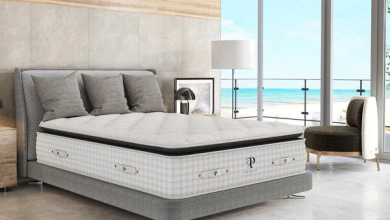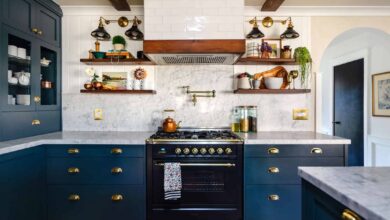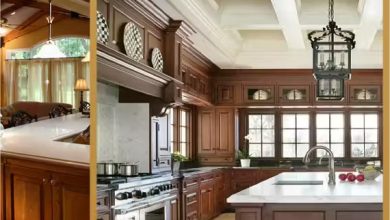Edwardian Era – “The Britain We Lost”

Today our story is about the Edwardian style – a typical English trend in architecture and design.
In 1901, after the death of Queen Victoria of England, the monarch Edward VII came to the throne. His reign was marked by significant changes in the lifestyle of the British and, as a result, in culture, architecture, and design.
This era is shrouded in nostalgic memories of “good old England”, with its moral values and leisurely measured way of life. The style of architecture that gained immense popularity during this period was named after the monarch – Edwardian.
A characteristic feature of this direction is eclecticism. It combines the romance of the Victorian style, the assertiveness of the fast-paced Art Nouveau, and the classical elements of Gregorian architecture.
Exterior view of an Edwardian house
A memorable touch of modernity in the Edwardian style is graceful glazed paneled front Edwardian doors. Often, Masonic symbols are carved on wood or stone, and the glass is decorated with stained-glass windows. Often these magnificent doors are adjacent to an elegant wooden veranda, uniting in a single stylistic composition.
History of the Edwardian era
After 1901, the rapid development of the once provincial British suburbs begins. The descendants of the English aristocracy and the middle class, seeking to improve their status, rush away from the dusty industrial cities. A technological leap in the development of the chemical industry has given the world the richest palette of building paints.
As a result, the dark gloomy houses of the Victorian era are full of new cheerful hues. The use of gas and electricity in the household also made changes to the usual architecture of buildings. Clear lines and light colors are characteristic of Edwardian houses. The interior space fills with air and light.
One of the characteristic features of the exterior of Edwardian buildings is the patchwork technology on the outer walls. In this case, the role of load-bearing structures play by wooden beams inclined at an angle to each other and protruding outward. The space between them was filled with brick and plaster. This style inherits from German architectural traditions.
Living room in the Edwardian era
Decorating a classic Edwardian fireplace is a song frozen in wood. Curved smooth lines, skillful carving, inlay with semi-precious stones – all this magnificence attracts the eye and fascinates.
Hallway in the Edwardian era
A mirror-polished natural wood floor is a hallmark of an Edwardian home. The beauty of the internal structure of the tree resembles a painting by a famous artist that can view endlessly. Magnificent Persian carpets spread in the rooms create an atmosphere of comfort and luxury.
Decorating a Living Room in the Edwardian Era
The advent of electricity and gas in homes made it possible to abandon the use of candles and stove heating. This fact made it possible to cover the walls with light wallpaper and paint in white. The influence of Art Nouveau reflects in the appearance of floral ornaments and floral motifs on the wallpaper.
Bedroom in the Edwardian era
The presence of a bathroom in the Victorian era was a symbol of poverty because the rich people of that time could afford to have many servants who brought hot water directly to their owner’s room. With the advent of the 20th century, such conventions have sunk into oblivion.
The bathroom has become familiar and necessary. Elements of the neo-Gregorian direction are organically woven into the Edwardian style. Large casement windows let in the maximum amount of natural light.
Bright living room in the Edwardian era
Bay windows and pilasters, characteristic of the Gregorian style, effectively highlight the discreet luxury of the Edwardian house. High ceilings and light walls allow you to focus on interior decoration.
Bathrooms in the Edwardian era
Your own small garden is an indispensable attribute of good taste. Perfect clear lines of flower beds perfectly combine with wicker furniture for relaxation.
Hall in the Edwardian era
As already mentioned, the Edwardian style is very eclectic. Therefore, furniture of other directions and styles looks to the place in the interior. For example baroque and rococo chairs and armchairs.
Terrace in the Edwardian era
Electric lighting came into general use during the time of King Edward. A variety of lamps have replaced candles and kerosene lamps. Fringed lampshades in a variety of colors have become an indispensable attribute of the interior of an Edwardian house.
Table lamp in the Edwardian era
Currently, the Edwardian style is once again on the wave of popularity. It is close to everyone who loves space and an abundance of natural light. Modern architects draw ideas from the housebuilders of that era. In particular, they use high ceilings and skylights to create an additional volume of air and light.
Source: secure-house.co.uk




